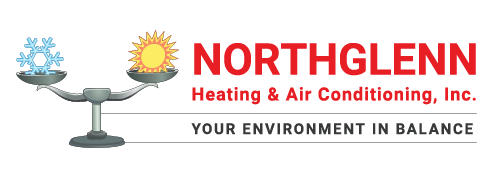When the weather is cooling off, you are probably wondering about how you’ll prepare your heating and cooling. After all, HVAC bills frequently add up to a big piece of your monthly electric bill. To learn new ways to save, some owners look closer at their thermostat. Maybe there’s a setting they could use to improve efficiency?
The bulk of thermostats include both a ‘Fan’ or ‘Fan On’ setting. But if the fan is on during a normal cycle, what can the fan setting provide for an HVAC system? This guide will help. We’ll review just what the fan setting is and how you can use it to save money during the summer or winter.
What Is the Fan Setting on My Thermostat?
For the majority of thermostats, the fan setting indicates that the HVAC blower fan keeps running. A few furnaces can run at a low level with this setting, but in general heating or cooling isn’t being produced. The ‘Auto’ setting, conversely, will run the fan during a heating or cooling cycle and turn it off once the cycle is finished.
There are benefits and drawbacks to using the fan setting on your thermostat, and the ideal option {will|can|should]] depend on your personal comfort preferences.
Advantages to using the Fan/On setting:
- You can keep the temperature throughout your home more consistent by allowing the fan to keep circulating air.
- Indoor air quality can increase because constant airflow will keep passing airborne particles through the air filter.
- A smaller amount of start-stop cycles for the system’s fan helps extend its life span. As the air handler is usually a component of the furnace, this means you could minimize the risk of needing furnace repair.
Disadvantages to using the Fan/On setting:
- A continuous fan could raise your energy expenses somewhat.
- Nonstop airflow could clog your air filter soon, increasing the frequency you will want to replace it.
Should My Thermostat Be on? Fan or Auto in Each Season
In the summer, warm air will sometimes linger in unfinished spaces including the attic or an attached garage. If you keep the fan running, your HVAC system may draw this warm air into the rest of your home, forcing the HVAC system to run longer to maintain the set temperature. In extreme heat, this could lead to needing AC repair more quickly as wear and tear increases.
The reverse can happen in the winter. Cooler spaces like a basement will hold onto cooler air, which will eventually flow into the rest of your home. Keeping the fan on will sometimes draw more cold air upward, increasing the amount of heating you need to stay warm.
If you’re still trying to decide if you should switch to the fan/on setting, don’t forget that every home and family’s comfort needs will vary. Leaving the HVAC system’s fan on might be best for you if:
Someone in your household suffers from allergies. Allergies and other respiratory conditions can be tough on the family. Leaving the fan on can help to increase indoor air quality, helping your family breathe easier.
Your home has hot and cold spots. Many homes wrestle with difficult hot and cold spots that quickly shift to a temperature different from the rest of the house. The fan setting should help lessen these changes by steadily refreshing each room’s airflow.
